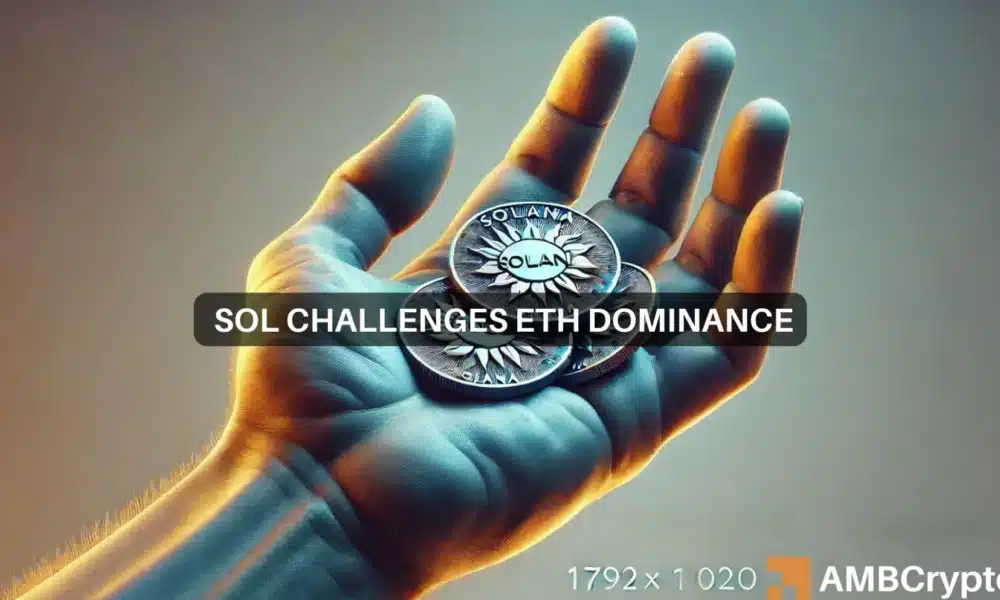Sygnum, a Swiss crypto bank, in its latest monthly report, has identified Solana (SOL) as a formidable competitor to Ethereum (ETH) in the finance sector, positioning itself as a strong alternative for various deployments and technological advancements.
Solana, often dubbed as an “Ethereum disruptor,” has been steadily gaining ground by capitalizing on Ethereum’s vulnerabilities to establish a competitive advantage.
Despite Ether’s continued dominance over Solana with a significant market cap difference of approximately $218 billion, Solana has witnessed a remarkable 300% surge in its price ratio against Ethereum over the past year. What factors have contributed to this surge?
Solana’s Emergence in the Financial Industry
A couple of years ago, the rivalry between SOL and ETH gained traction when Solana entered a partnership with Visa, integrating SOL for USD Coin settlements, highlighting its superior throughput and cost-effectiveness.
Recently, Solana received a boost in its upward trajectory with the announcement of asset manager Franklin Templeton’s plans to introduce a mutual fund on the Solana blockchain.
The growing influence of Solana in the finance sector has led the Swiss bank to acknowledge it as a “serious contender” to Ethereum in the foreseeable future.
While the exact timeline for this potential transition remains uncertain, Solana is undoubtedly narrowing the gap with Ethereum across various indicators.
For instance, Ethereum’s decentralized exchange (DEX) volume declined from $2 billion in August to $1.7 billion presently, whereas Solana’s DEX volume has remained stable and even shown improvement during the same period.
In summary, strategic collaborations with major financial entities like Visa have boosted Solana’s profile, potentially attracting new investors and posing a challenge to Ethereum’s supremacy.
Besides these partnerships, the ongoing comparisons between Solana and Ethereum are supported by a well-thought-out plan aimed at surpassing the older Ethereum blockchain.
Solana Leveraging Ethereum’s Weaknesses
Solana’s architecture, which emphasizes high throughput and low transaction fees, offers an enticing proposition for users and developers alike.
On the contrary, Ethereum grapples with high gas fees, which can act as a deterrent for users seeking to engage with its network.
The repercussions of this divergence are clearly visible. Solana has surpassed 1 billion monthly transactions, while Ethereum struggles with low network activity, recording only 200 million transactions.
Evidently, the soaring gas fees on Ethereum have redirected users to Solana in pursuit of quicker and cost-effective transactions.
In essence, in just four years since its inception, Solana has made significant strides. While it excels in certain aspects, Ethereum still maintains its dominance in other areas.
Ultimately, for Solana to emerge as a genuine rival to Ethereum, it must foster innovative decentralized applications that drive widespread adoption—an arena where Ethereum currently reigns supreme.

